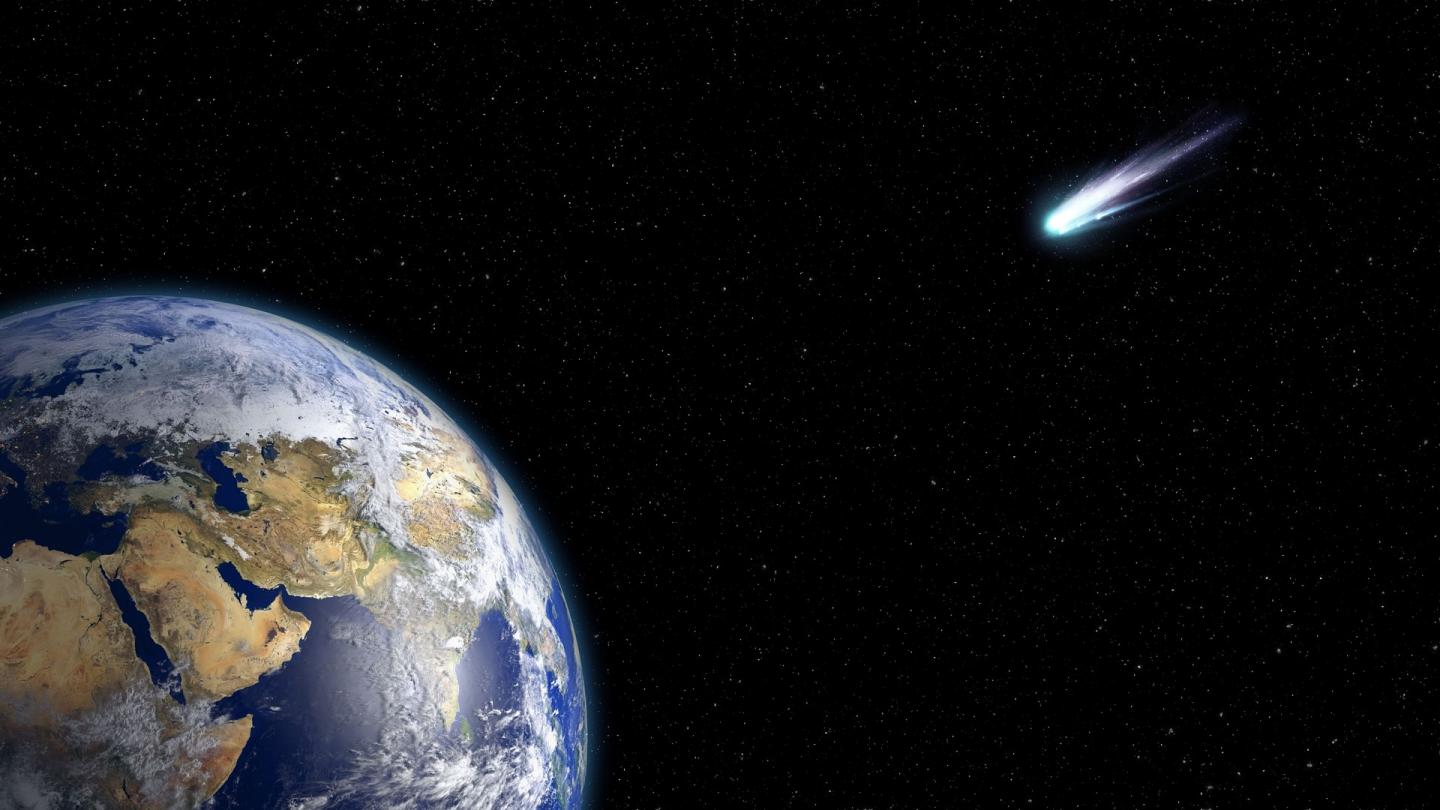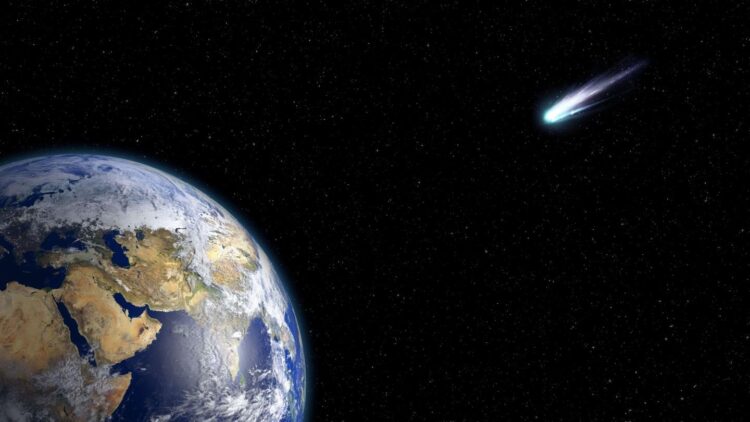New theory explains possible origin of the Armageddon-causing object.

Credit: Credit not required. This is a public domain image.
It forever changed history when it crashed into Earth about 66 million years ago.
The Chicxulub impactor, as it’s known, left behind a crater off the coast of Mexico that spans 93 miles and runs 12 miles deep. Its devastating impact brought the reign of the dinosaurs to an abrupt and calamitous end by triggering their sudden mass extinction, along with the end of almost three-quarters of the plant and animal species living on Earth.
The enduring puzzle: Where did the asteroid or comet originate, and how did it come to strike Earth? Now, a pair of researchers at the Center for Astrophysics | Harvard & Smithsonian believe they have the answer.
In a study published today in Nature’s Scientific Reports, Harvard University astrophysics undergraduate student Amir Siraj and astronomer Avi Loeb put forth a new theory that could explain the origin and journey of this catastrophic object.
Using statistical analysis and gravitational simulations, Siraj and Loeb calculate that a significant fraction of long-period comets originating from the Oort cloud, an icy sphere of debris at the edge of the solar system, can be bumped off-course by Jupiter’s gravitational field during orbit.
“The solar system acts as a kind of pinball machine,” explains Siraj, who is pursuing bachelor’s and master’s degrees in astrophysics, in addition to a master’s degree in piano performance at the New England Conservatory of Music. “Jupiter, the most massive planet, kicks incoming long-period comets into orbits that bring them very close to the sun.”
During close passage to the sun, the comets — nicknamed “sungrazers” –can experience powerful tidal forces that break apart pieces of the rock and ultimately, produce cometary shrapnel.
“In a sungrazing event, the portion of the comet closer to the sun feels a stronger gravitational pull than the part that is further, resulting in a tidal force across the object,” Siraj says. “You can get what’s called a tidal disruption event, in which a large comet breaks up into many smaller pieces. And crucially, on the journey back to the Oort cloud, there’s an enhanced probability that one of these fragments hit the Earth.”
The new calculations from Siraj and Loeb’s theory increase the chances of long-period comets impacting Earth by a factor of about 10, and show that about 20 percent of long-period comets become sungrazers.
The pair say that their new rate of impact is consistent with the age of Chicxulub, providing a satisfactory explanation for its origin and other impactors like it.
“Our paper provides a basis for explaining the occurrence of this event,” Loeb says. “We are suggesting that, in fact, if you break up an object as it comes close to the sun, it could give rise to the appropriate event rate and also the kind of impact that killed the dinosaurs.”
Evidence found at the Chicxulub crater suggests the rock was composed of carbonaceous chondrite. Siraj and Loeb’s hypothesis might also explain this unusual composition.
A popular theory on the origin of Chicxulub claims that the impactor originated from the main belt, which is an asteroid population between the orbit of Jupiter and Mars. However, carbonaceous chondrites are rare amongst main-belt asteroids, but possibly widespread amongst long-period comets, providing additional support to the cometary impact hypothesis.
Other similar craters display the same composition. This includes an object that hit about 2 billion years ago and left the Vredefort crater in South Africa, which is the largest confirmed crater in Earth’s history, and the impactor that left the Zhamanshin crater in Kazakhstan, which is the largest confirmed crater within the last million years. The researchers say that the timing of these impacts support their calculations on the expected rate of Chicxulub-sized tidally disrupted comets.
Siraj and Loeb say their hypothesis can be tested by further studying these craters, others like them, and even ones on the surface of the moon to determine the composition of the impactors. Space missions sampling comets can also help.
Aside from composition of comets, the new Vera Rubin Observatory in Chile may be able to observe tidal disruption of long-period comets after it becomes operational next year.
“We should see smaller fragments coming to Earth more frequently from the Oort cloud,” Loeb says. “I hope that we can test the theory by having more data on long-period comets, get better statistics, and perhaps see evidence for some fragments.”
Loeb says understanding this is not just crucial to solving a mystery of Earth’s history but could prove pivotal if such an event were to threaten the planet.
“It must have been an amazing sight, but we don’t want to see that again,” he said.
###
This work was partially supported by the Harvard Origins of Life Initiative and the Breakthrough Prize Foundation.
About the Center for Astrophysics | Harvard & Smithsonian
The Center for Astrophysics | Harvard & Smithsonian is a collaboration between Harvard and the Smithsonian designed to ask–and ultimately answer–humanity’s greatest unresolved questions about the nature of the universe. The Center for Astrophysics is headquartered in Cambridge, MA, with research facilities across the U.S. and around the world.
Media Contact
Nadia Whitehead
[email protected]





